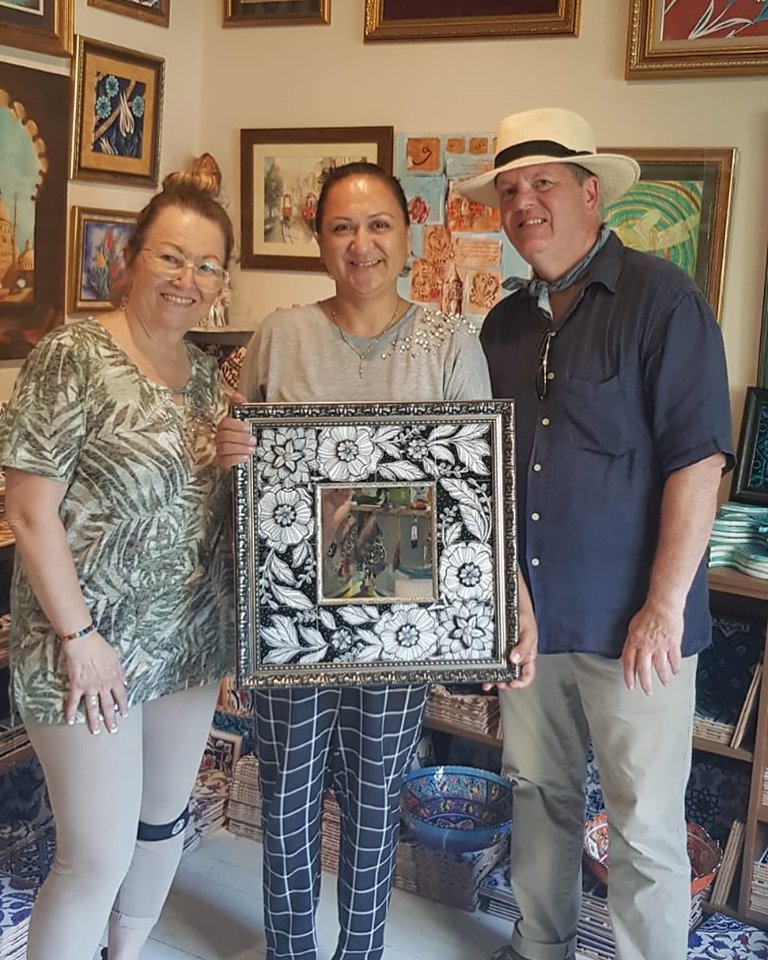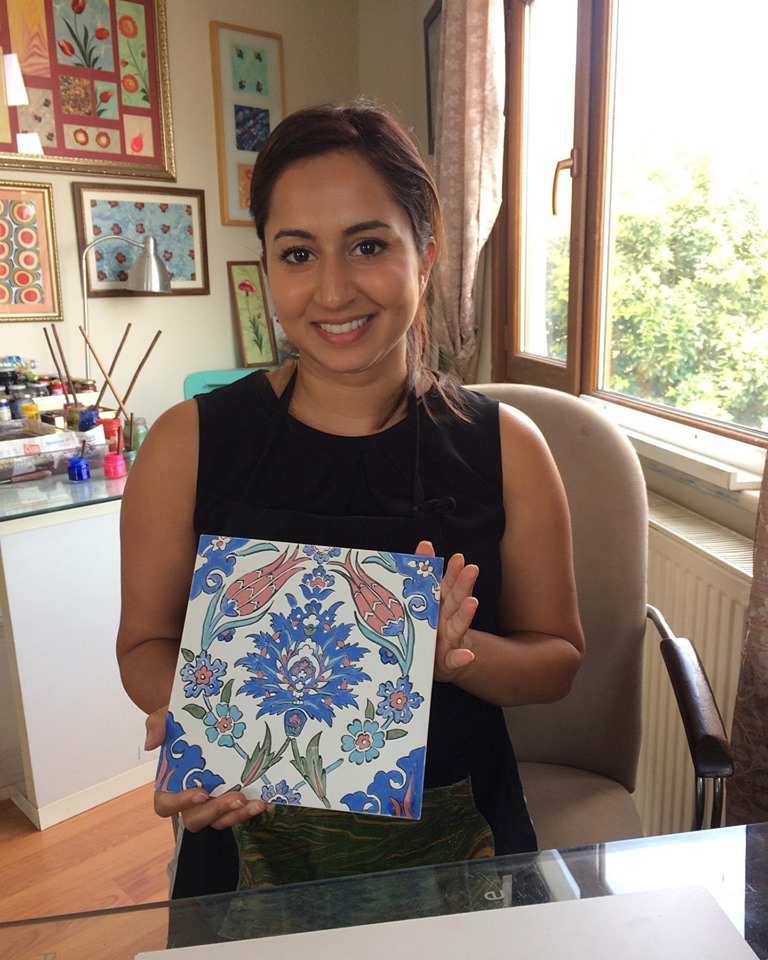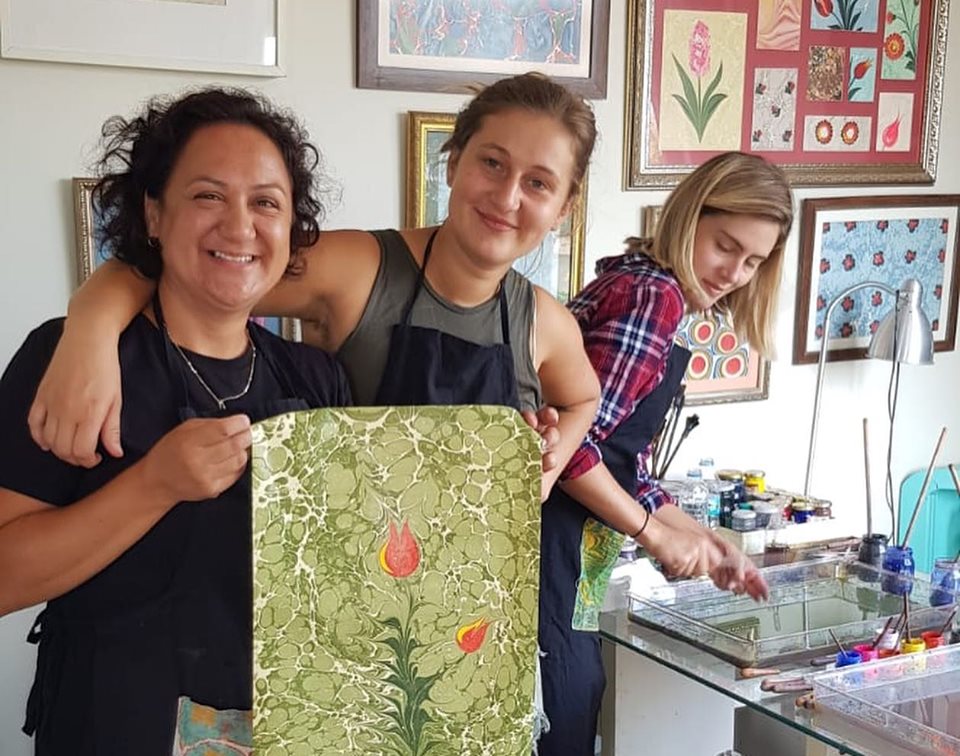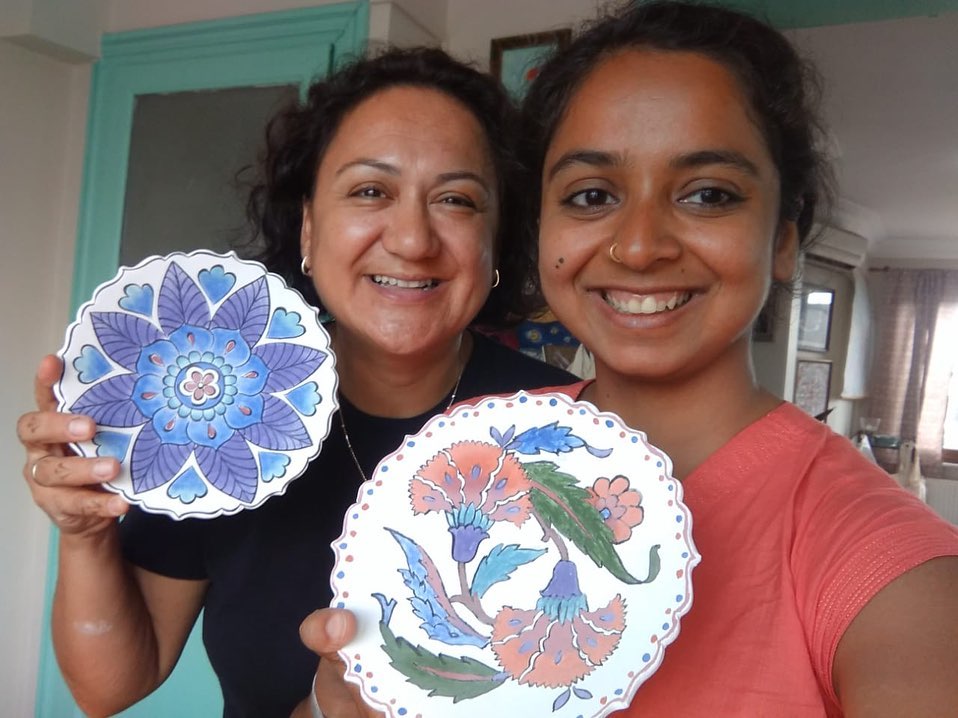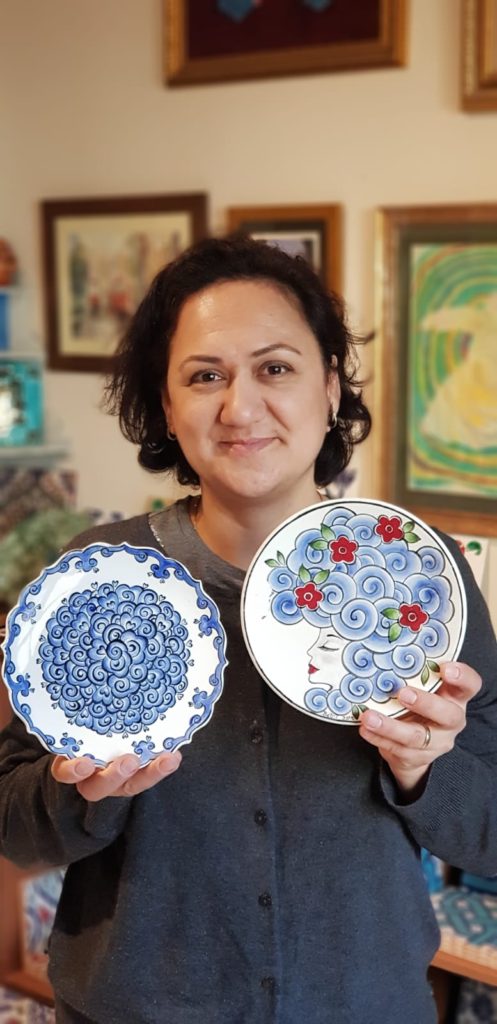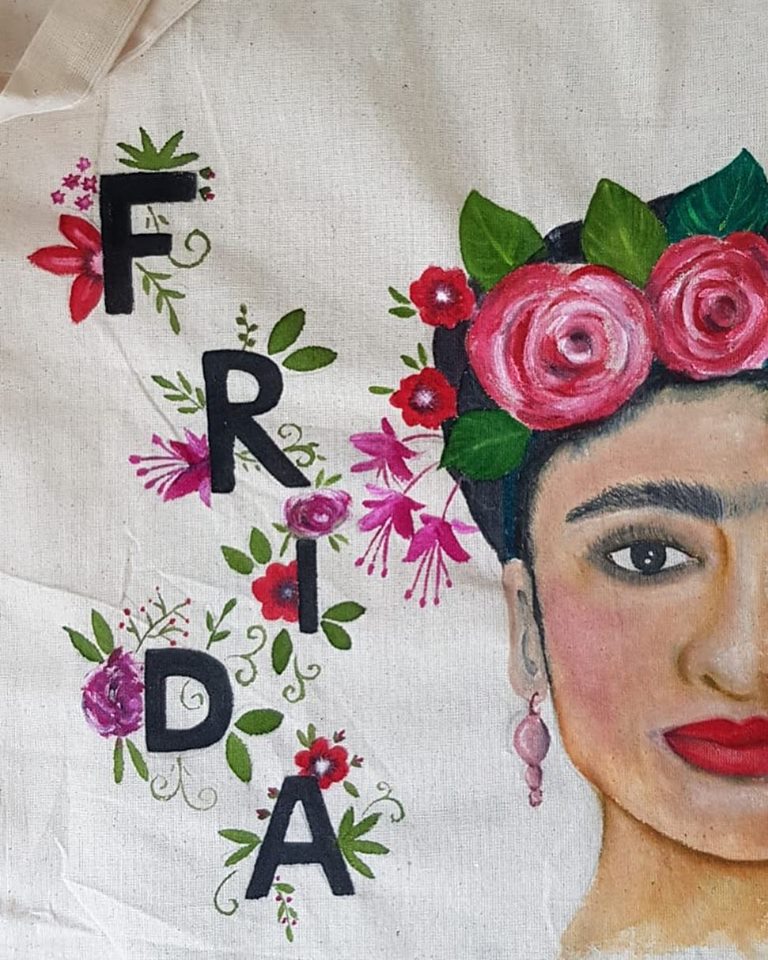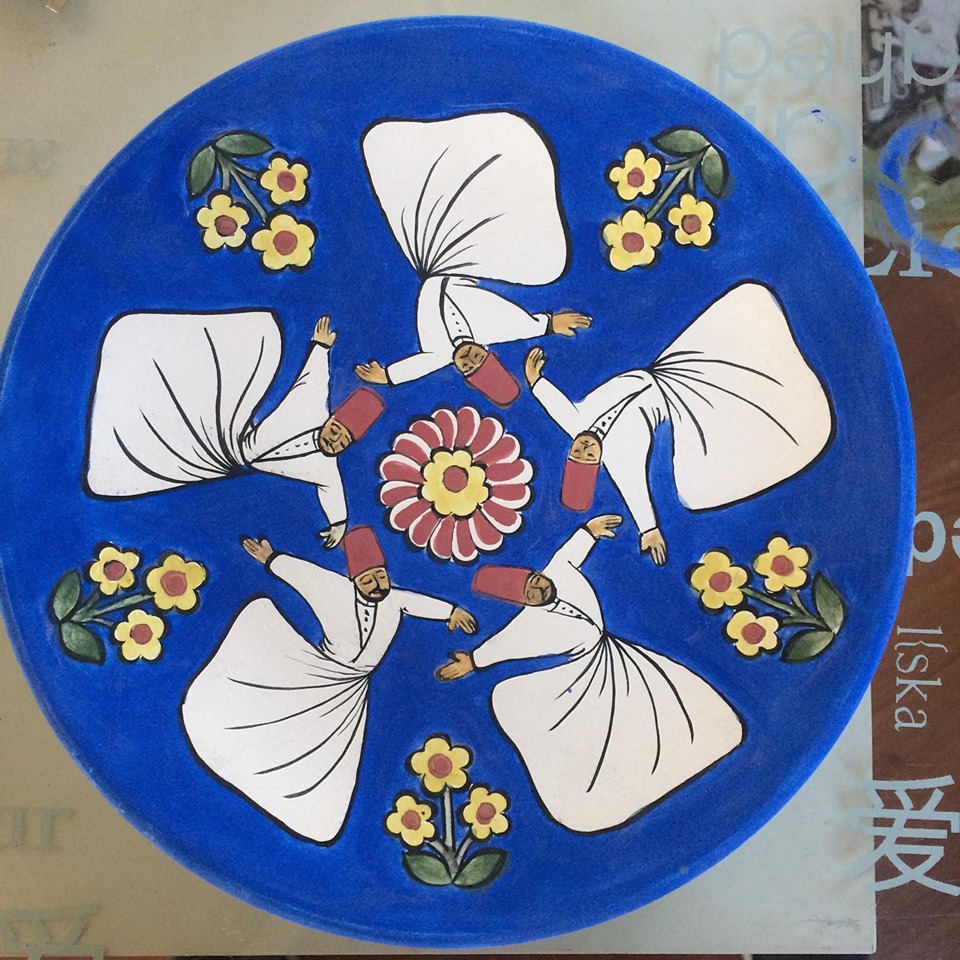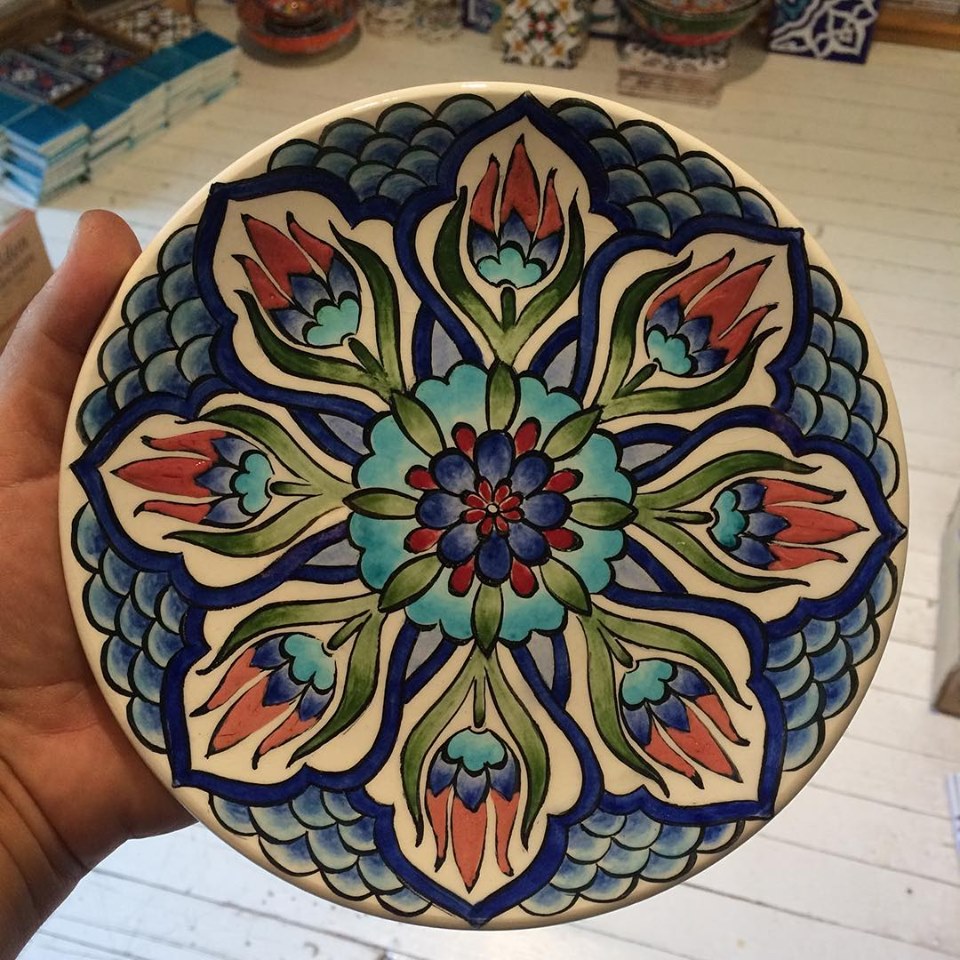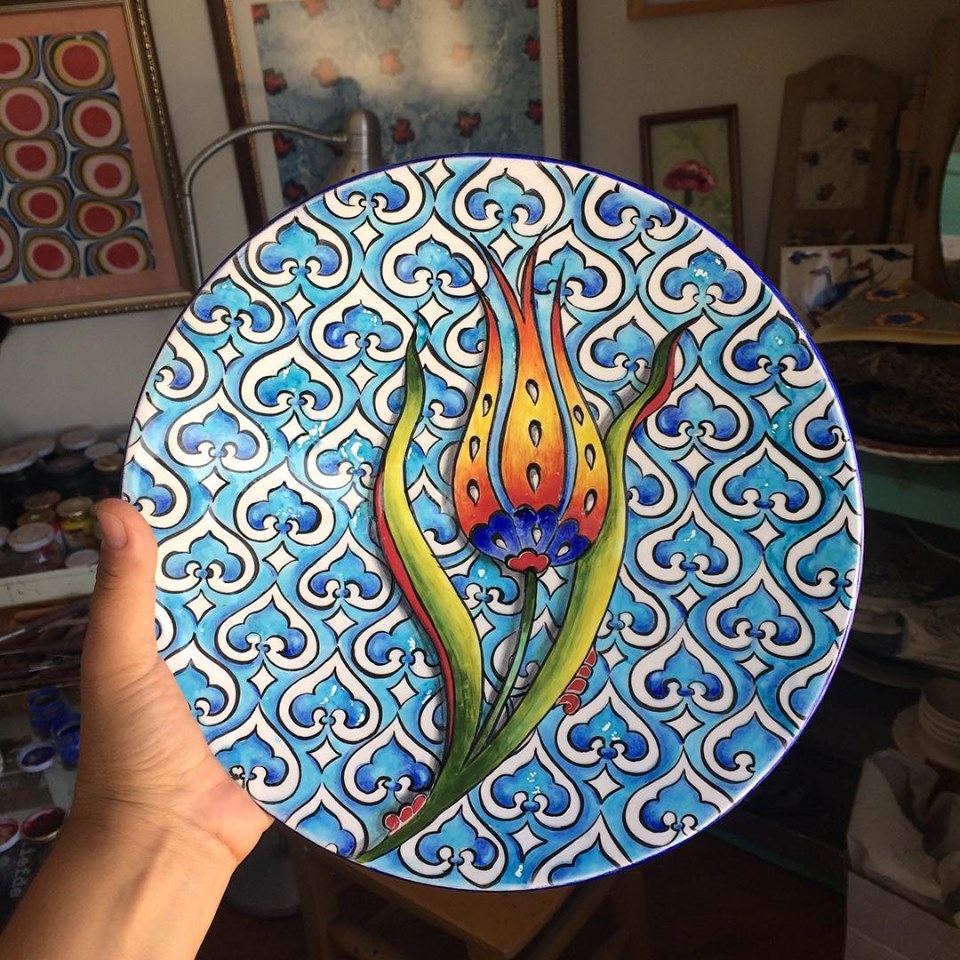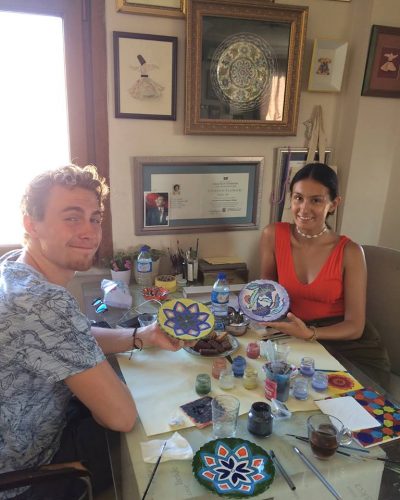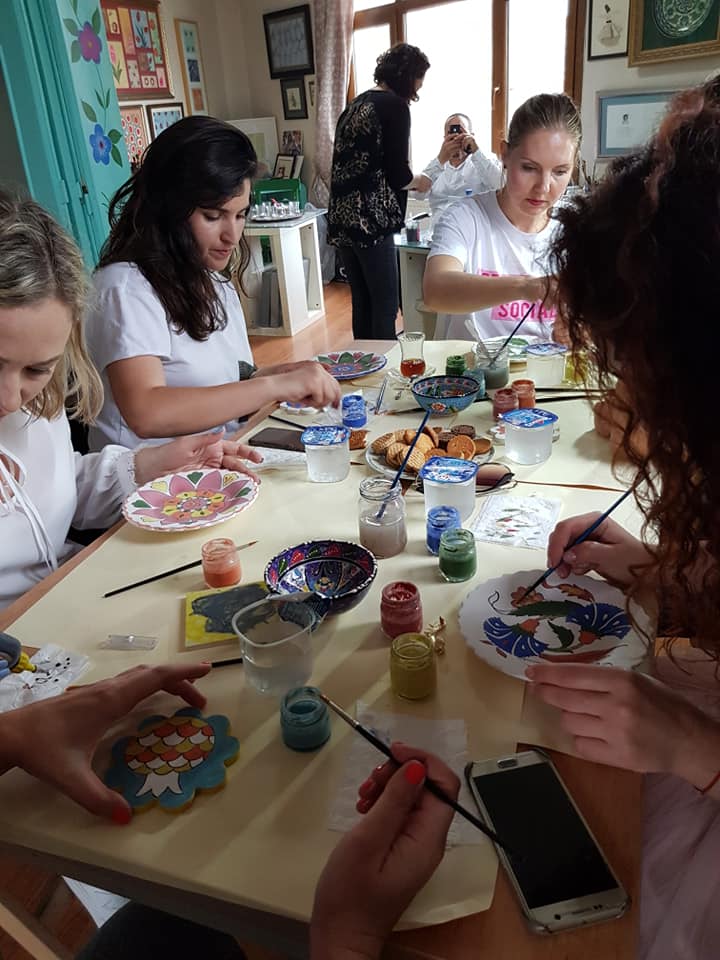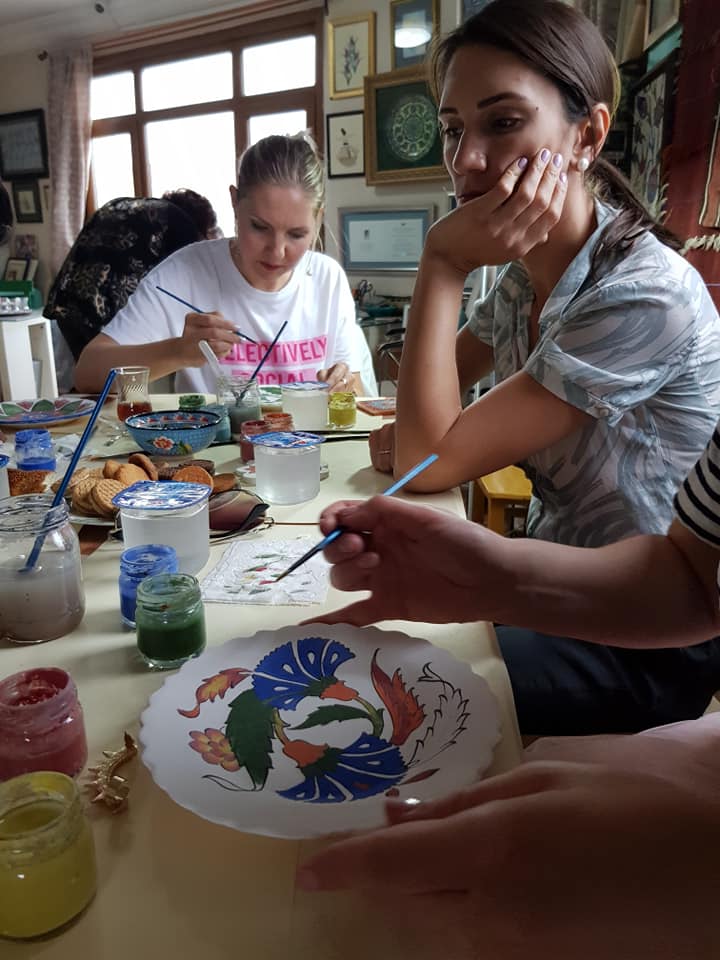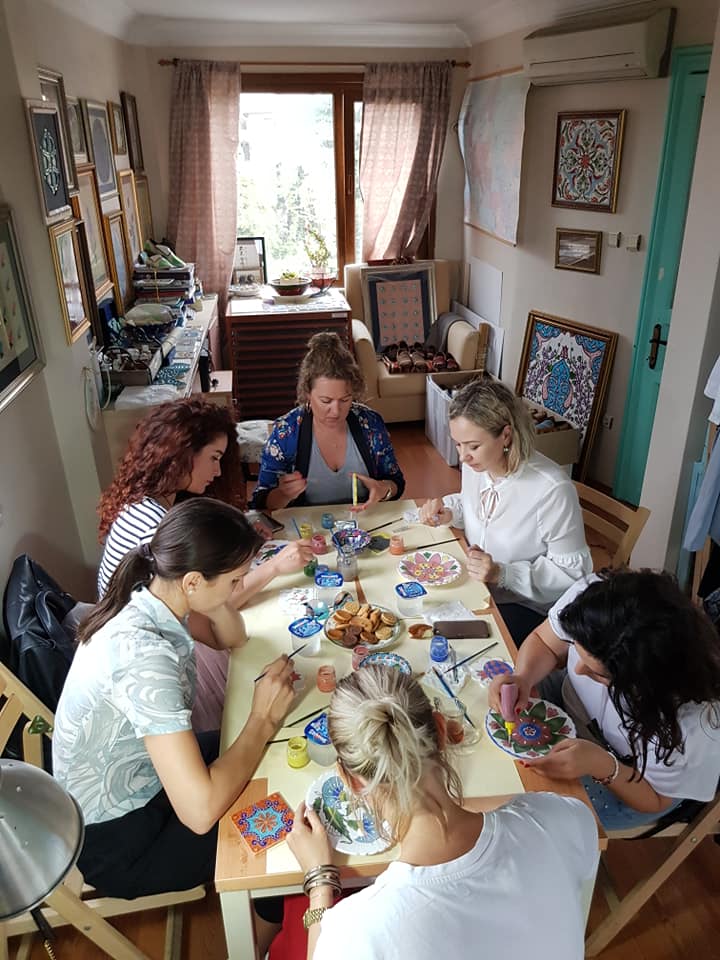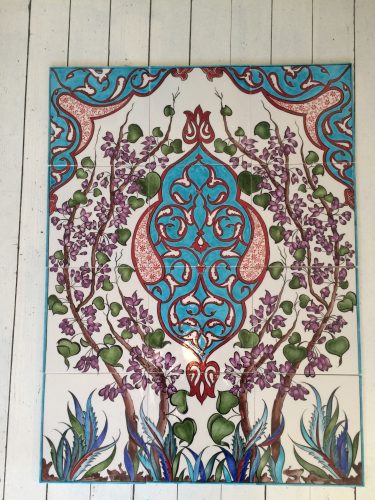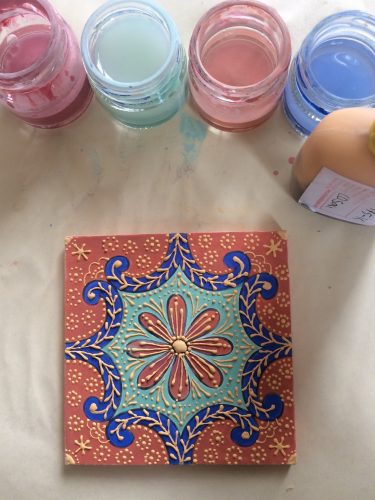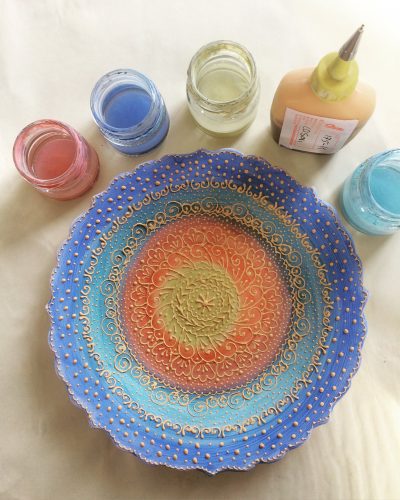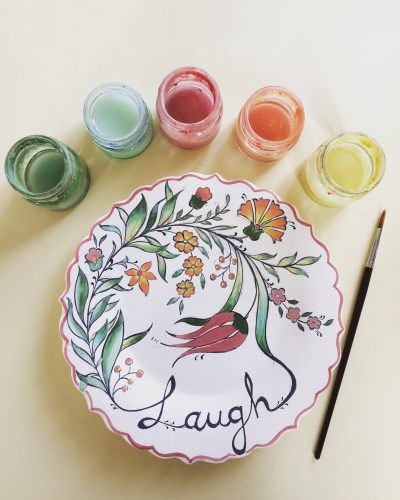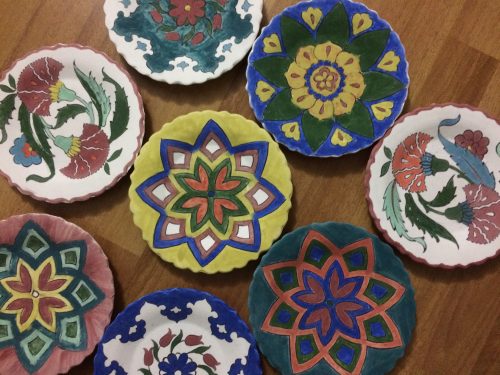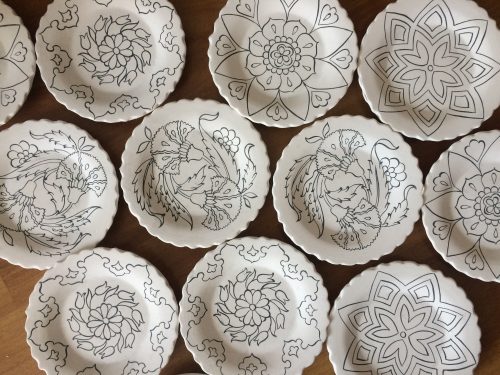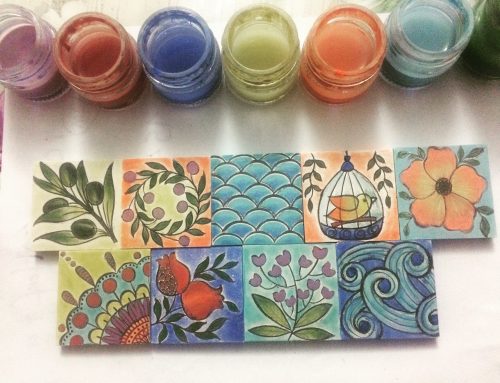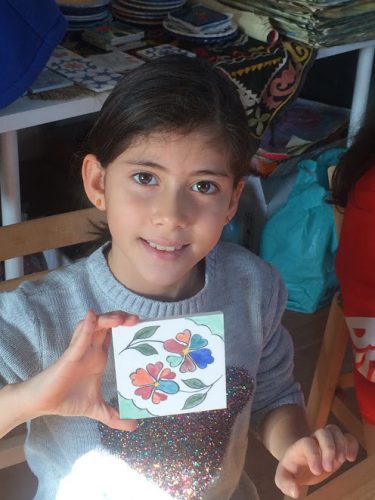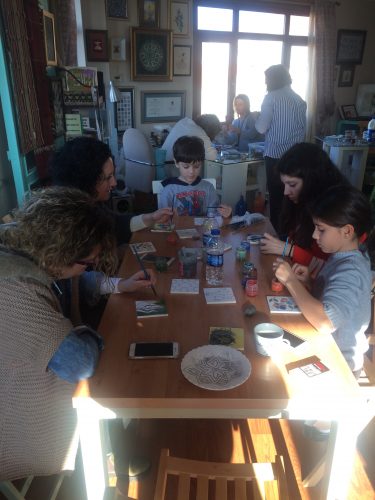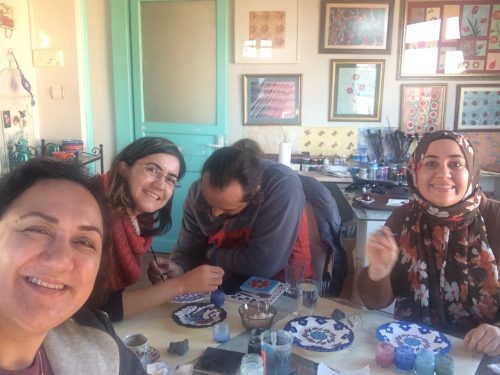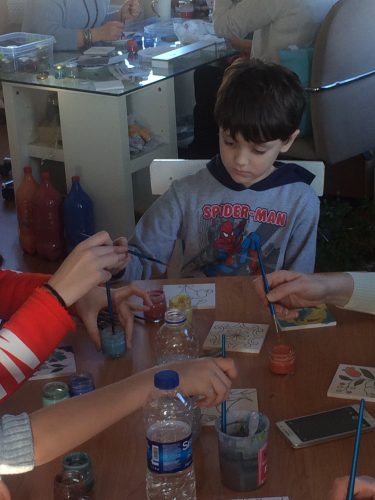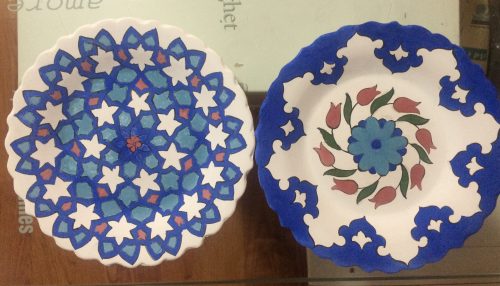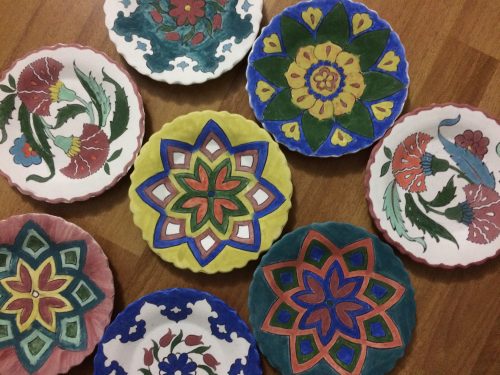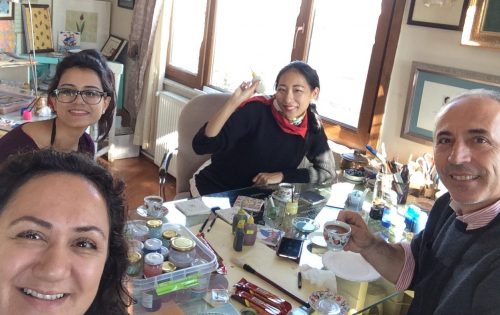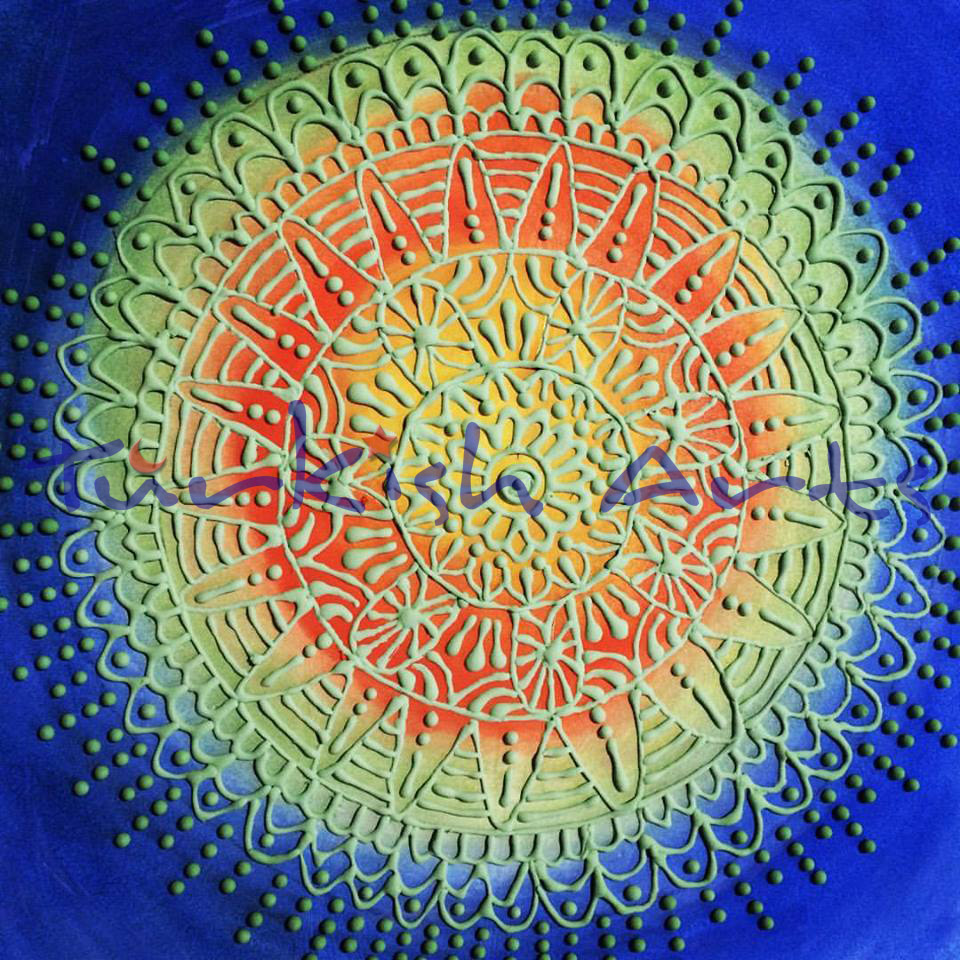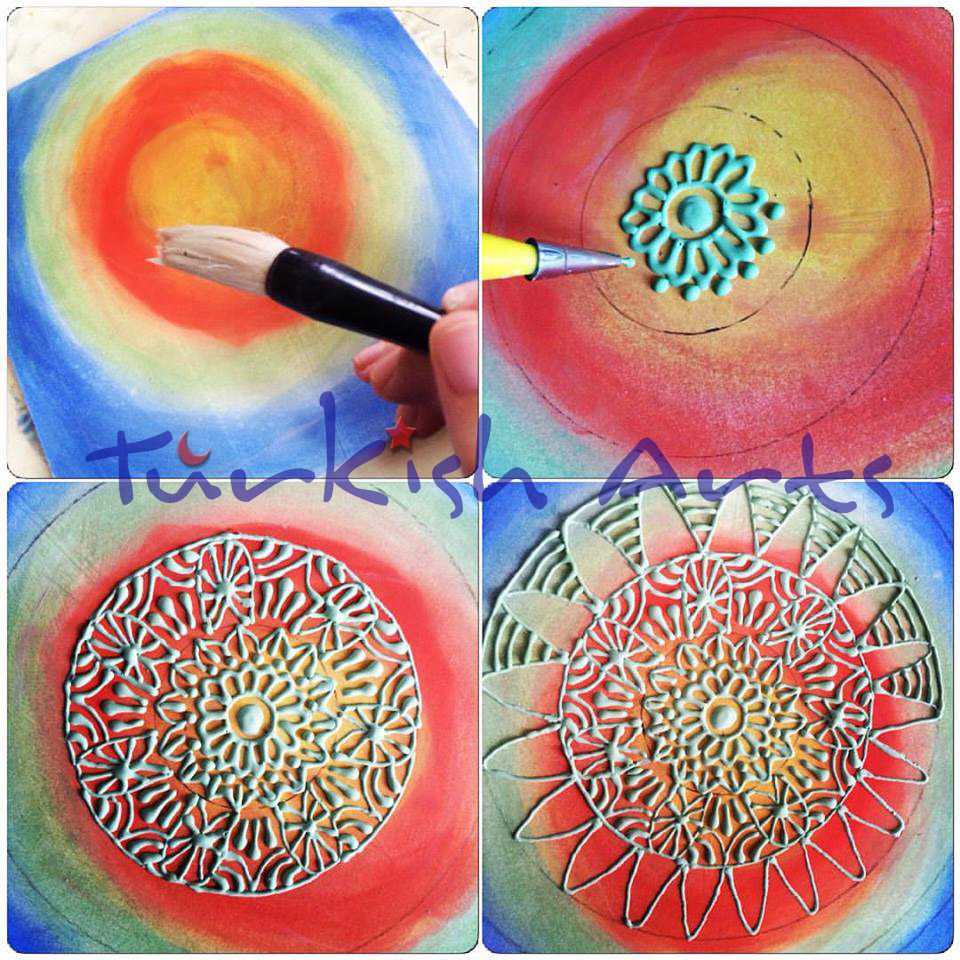
Happy guests from our art workshops

Traditional Turkish Tiles
The art of Turkish tiles and ceramics have a very important in the history of Islamic art. Its roots can be traced at least as far back as the Uighurs of the 8th and 9th centuries. Its subsequent development was influenced by Karakhanid, Ghaznavid, and (especially) Iranian Seljuk art. With the Seljuks’ victory over the Byzantines at Malazgirt in 1071, the art followed them into Anatolia and embarked upon a new period of strong development fostered by the Anatolian Seljuk sultanate.
There is a widely held but quite erroneous belief that figurative painting, is not found in Islamic art due to prohibition by the Koran. Religious rulings issued only in the ninth century discouraged the representation of any living beings capable of movement but they were not rigidly enforced until the fifteenth century. Figural art is especially rich in tiles as well as stone and stucco reliefs of the Seljuk period, adorning both secular and religious reliefs monuments. The subjects included nobility as well as servants, hunters and hunting animals, trees, birds, sphinxes, lions, sirens, dragons and double-headed eagles.
